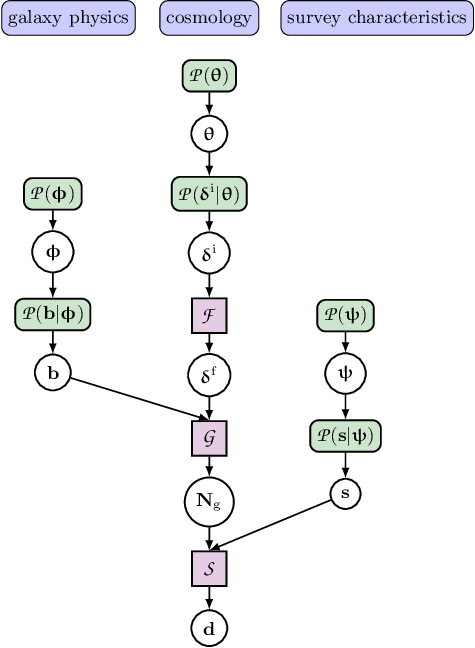 "How fair are the bright eyes in the grass! Evermind they are called, simbelmynë in this land of Men, for they blossom in all the seasons of the year, and grow where dead men rest."
"How fair are the bright eyes in the grass! Evermind they are called, simbelmynë in this land of Men, for they blossom in all the seasons of the year, and grow where dead men rest."Gandalf, The Two Towers III 6, The King of the Golden Hall
Simbelmynë [SEEM-bale-mü-nay] is a hierarchical probabilistic simulator to generate synthetic galaxy survey data. The code is publicly available on the Aquila Consortium's git server, and the documentation is available on Read the Docs.
Simbelmynë is written in C with Open-MP parallelisation, and includes various additional tools written in python 3. The current version (v0.x.x) is a beta-release; the code will be further developed and documented in the future.
Limited user-support may be asked by email.
Reference
Simbelmynë does not have its scientific paper yet. For the time being, if you want to acknowledge use of this software, please link to the public repository (https://git.aquila-consortium.org/Aquila-Consortium/simbelmyne) and cite Leclercq et al. (2015), where it was first used:
Bayesian analysis of the dynamic cosmic web in the SDSS galaxy survey
F. Leclercq, J. Jasche, B. Wandelt
JCAP 6, 15 (2015), arXiv:1502.02690 [astro-ph.CO] ADS pdf
From version 0.4.0, Simbelmynë includes an implementation of the perfectly parallel algorithm for cosmological simulations described in Leclercq et al. (2020). If using this feature, please also cite:
Perfectly parallel cosmological simulations using spatial comoving Lagrangian acceleration
F. Leclercq, B. Faure, G. Lavaux, B. D. Wandelt, A. H. Jaffe, A. F. Heavens, W. J. Percival, C. Noûs
A&A 639, A91 (2020), arXiv:2003.04925 [astro-ph.CO] ADS pdf
Simbelmynë also includes an implementation of COmoving Computer Acceleration (COCA), introduced in Bartlett et al. (2025). If using this feature, please also cite:
COmoving Computer Acceleration (COCA): N-body simulations in an emulated frame of reference
D. J. Bartlett, M. Chiarenza, L. Doeser, F. Leclercq
A&A 694, A287 (2025), arXiv:2409.02154 [astro-ph.CO] ADS pdf
You can find the respective BibTeX entries in the CITATION.bib file enclosed in the repository.
Key features
Simbelmynë is a parallel code, which, due to its fast nature, can be used to generate a large number of realisations of synthetic galaxy survey data. As the intended use is within cosmological analyses of real survey data, Simbelmynë has been developed as a self-contained, end-to-end generative process. The focus has been placed on speed and accuracy at the relevant scales.
Current key features of the simulator are:
- simulation of the physics of dark matter structure formation via non-linear models: Lagrangian perturbation theory (LPT), a particle-mesh (PM) code, tCOLA (Tassev et al. 2013), sCOLA (Tassev et al. 2015; Leclercq et al. 2020), or COCA (Bartlett et al. 2025)
- galaxy bias
- redshift-space distortions
- survey geometry
- selection effects
- a module containing various cosmic web classifiers
- a module containing phase-space field estimators
 Generation of synthetic galaxy observations with Simbelmynë. The code first generates a dark matter density field (left panel) using a non-linear gravitational model. The galaxy density field (middle panel) takes into account galaxy bias and redshift-space distortions. From this, observations are simulated (right panel) using the survey geometry and a prescription for selection effects.
Generation of synthetic galaxy observations with Simbelmynë. The code first generates a dark matter density field (left panel) using a non-linear gravitational model. The galaxy density field (middle panel) takes into account galaxy bias and redshift-space distortions. From this, observations are simulated (right panel) using the survey geometry and a prescription for selection effects.
Bayesian hierarchical modelling
 A generative forward model for galaxy survey data, implemented in Simbelmynë.
A generative forward model for galaxy survey data, implemented in Simbelmynë.
As an end-to-end generative process for galaxy survey data, the algorithm implemented in Simbelmynë can be conveniently formulated in the form of a Bayesian hierarchical model, represented diagrammatically in the figure.
The set of model parameters can be defined as follows: cosmological parameters θ, a set of parameters Φ characterising the distributions of intrinsic galaxy properties, and a set of parameters Ψ characterising the survey and observational effects. The latent variables are the initial density contrast δi, the final density contrast δf, the population of galaxies Ng, galaxy bias parameters b, and survey parameters s. The data d are the observed galaxies. The model involves three deterministic blocks: a simulator of dark matter structure formation F, a simulator of galaxy biasing G, and a virtual observatory S.
As a simulator implementing this generative forward model, the Simbelmynë code is particularly suitable for use with likelihood-free inference methods.
Future versions
Future public releases of the code will include additional features that are currently being tested. These include:
- an extended module for deterministic and stochastic galaxy bias,
- an extended module for survey systematic effects.
Origin of the name
Simbelmynë is an Old English (c. 650 to 1066) word derived from simbel, meaning "always, continually", and mynë, meaning "memory, remembrance, memorial". It can be translated as "Evermind". In mynë, the letter y is used to transliterate and transcribe the rune ᚣ (ȳr), , and it is pronounced [y] (close front rounded vowel, as in the French tu). The ë (e-umlaut) is used to indicate that the final e is not mute. It is pronounced [ε] (open-mid front unrounded vowel, as in the Modern English bet)..
In J. R. R. Tolkien's legendarium, simbelmynë is used to refer to an imaginary small white flower (a variety of anemone). Literary onomastics reveals that the name is fitting in more than the usual sense (see Robinson 2013). For the interested reader, more information is available here, here and here.


